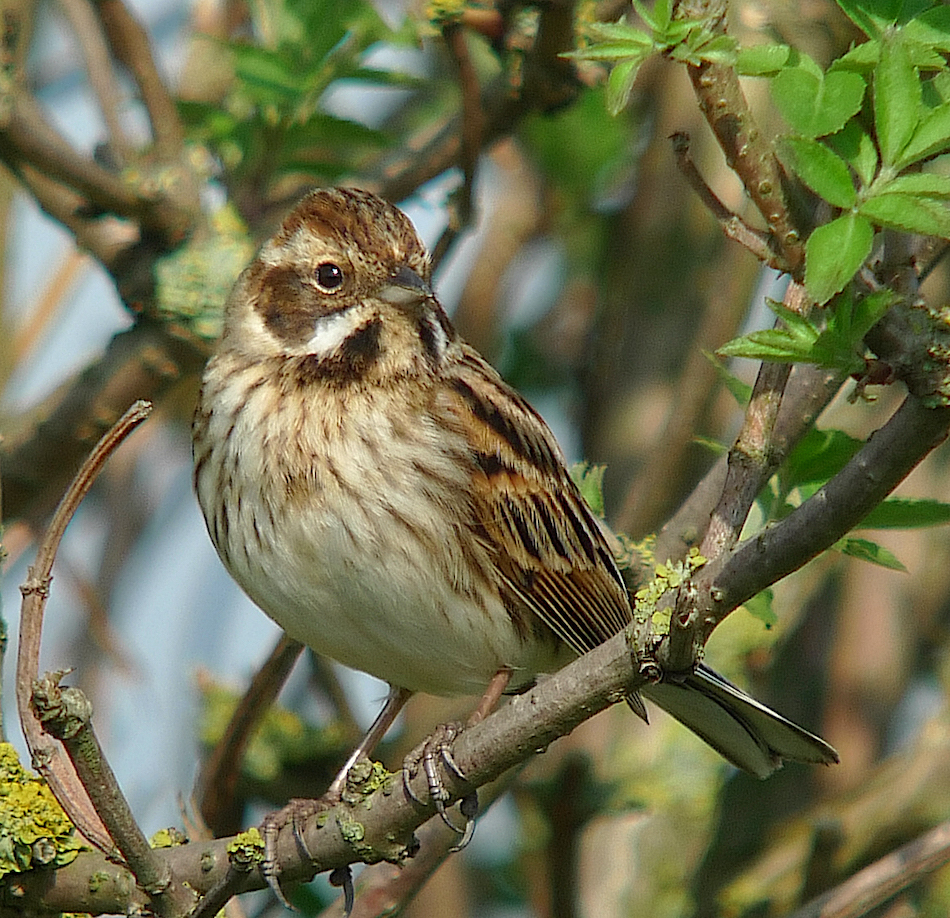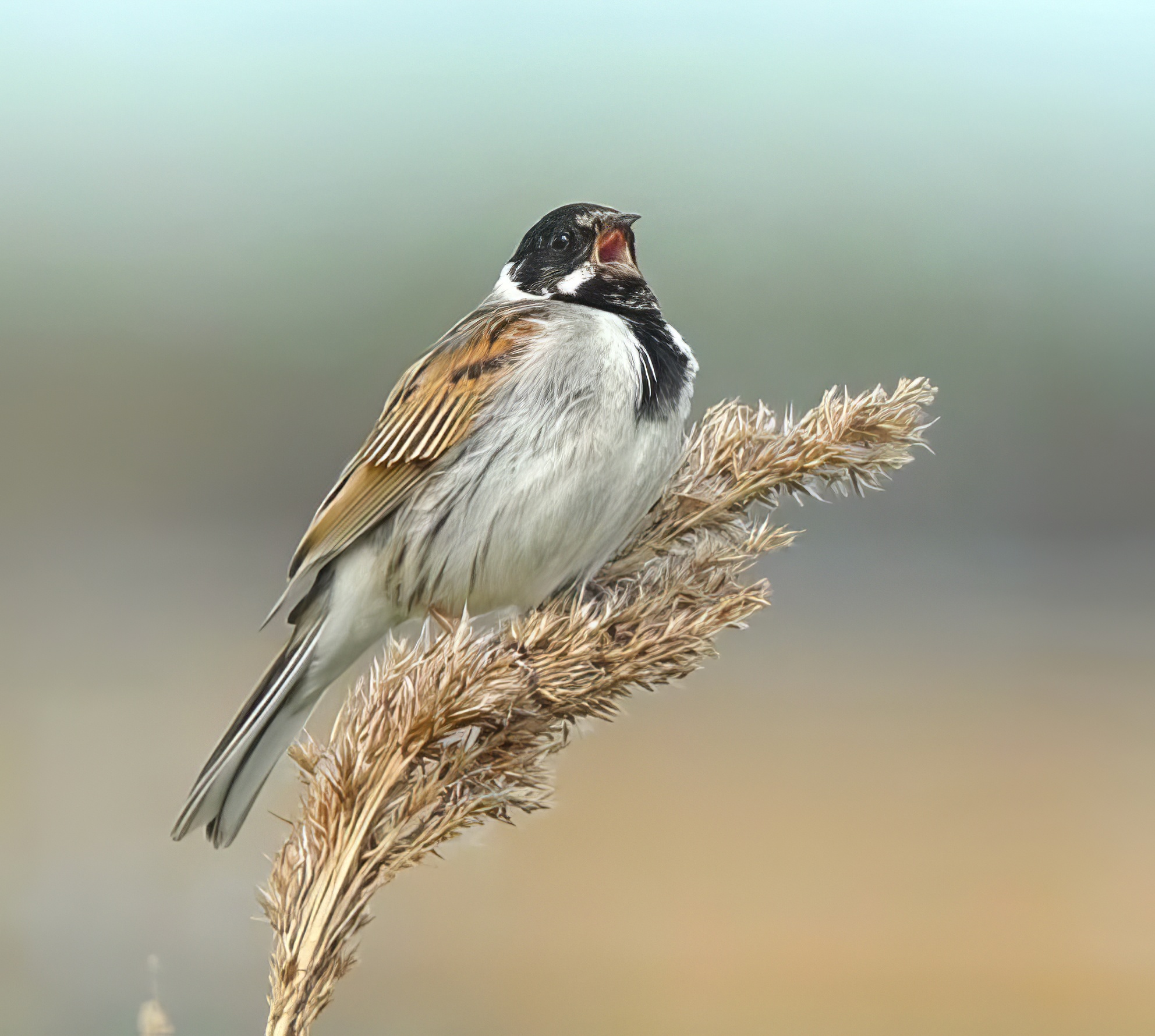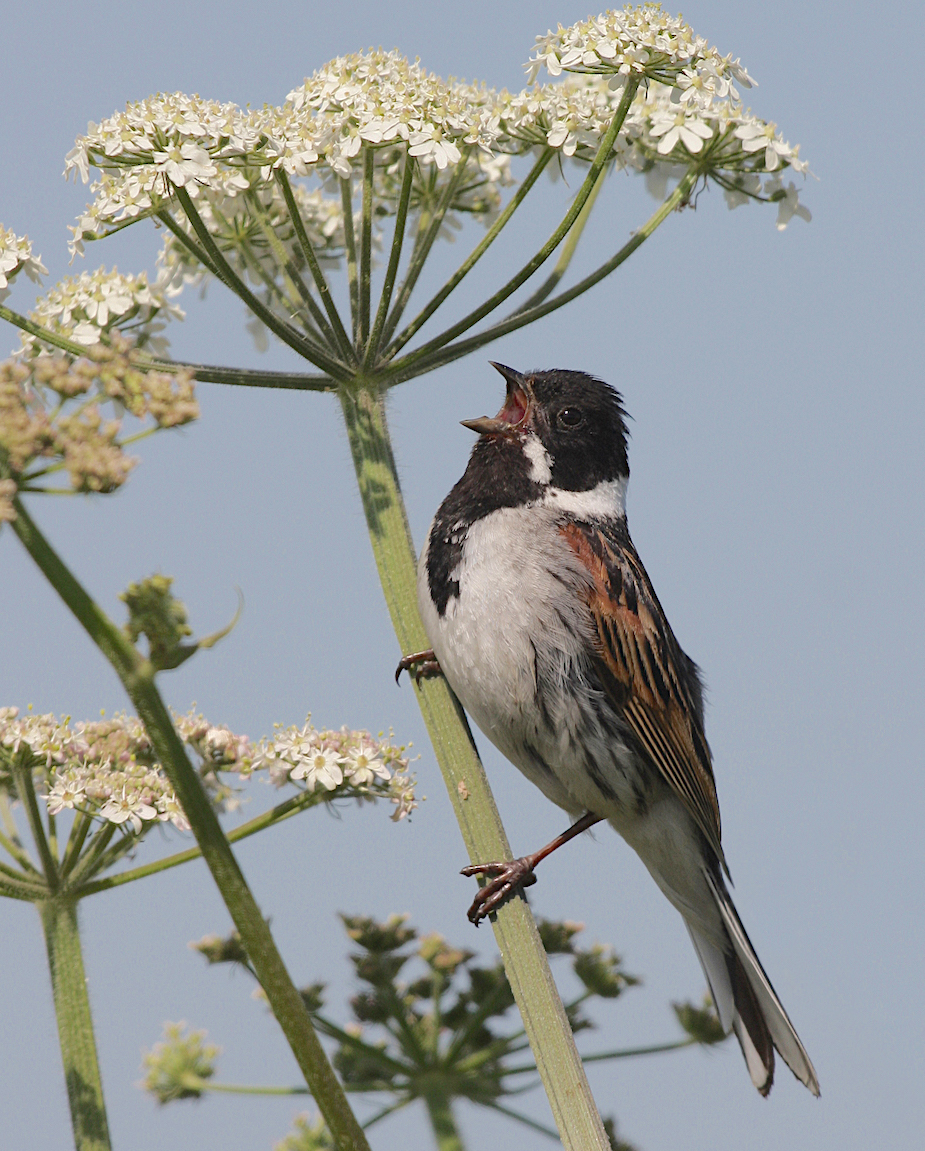Reed Bunting Emberiza schoeniclus
Very common resident and passage migrant.


Reed Buntings: left, Bardney April 10th 2009 (Russell Hayes); centre, Frampton Marsh June 21st 2010 (Neil Smith);
right, Gibraltar Point April 7th 2012 (Paul Neale).
As its name suggests, Reed Bunting was originally a bird of reedbed and marsh, but it has also exploited arable farmland too. It particularly likes reedy dykes in The Marsh, Fens, Trent valley and Isle of Axholme and along the coastal fringes but it also occurs in the Wolds and other higher ground. Agricultural intensification caused it to decline along with other farmland birds in the 1970s and 1980s and the Atlas put the Lincolnshire population at 8,000-10,000 pairs and Reed Buntings have done better in Lincolnshire than other parts of England over the period 1994-2019. The APEP4 adjusted estimated population for Lincolnshire in 2016 is a massive 32,000 pairs. The main reason for this is that Reed Buntings have taken to breeding in oilseed rape and BTO BirdTrends indicates that their density in oilseed rape is four times greater than in any other arable crop. Since Lincolnshire has probably the greatest area of this crop in the country it becomes easier to see why they are doing well here. Although British Reed Buntings are thought to winter in Britain a pronounced passage of birds from the near continent, from The Netherlands to Norway, occurs along the coast in September-October. As usual Gibraltar Point Bird Observatory makes the most rigorous counts and during 2014-2018 LBR data showed that the peak passage days ranged from September 30th-October 23rd with peak counts ranging from 86 a day in October 2015 to 443 in September 2017. Overall, thousands of birds are involved each autumn and passage is often viewed from Donna Nook too. Like other buntings, Reed Buntings flock up in winter and during 2014-2018 peak flock counts ranged from 220 in 2018 to 350 in December 2014 and January 2015 at Garthorpe, on the west bank of the mouth of the Trent. This massive flock was feeding on a crop of unharvested wheat next to a reedbed. The average peak winter flock size over those five years was 300.The highest single winter count reported by the Atlas during the 1980s was 200.
(Updated with reference to the new Birds of Lincolnshire (2021) January 2023)

